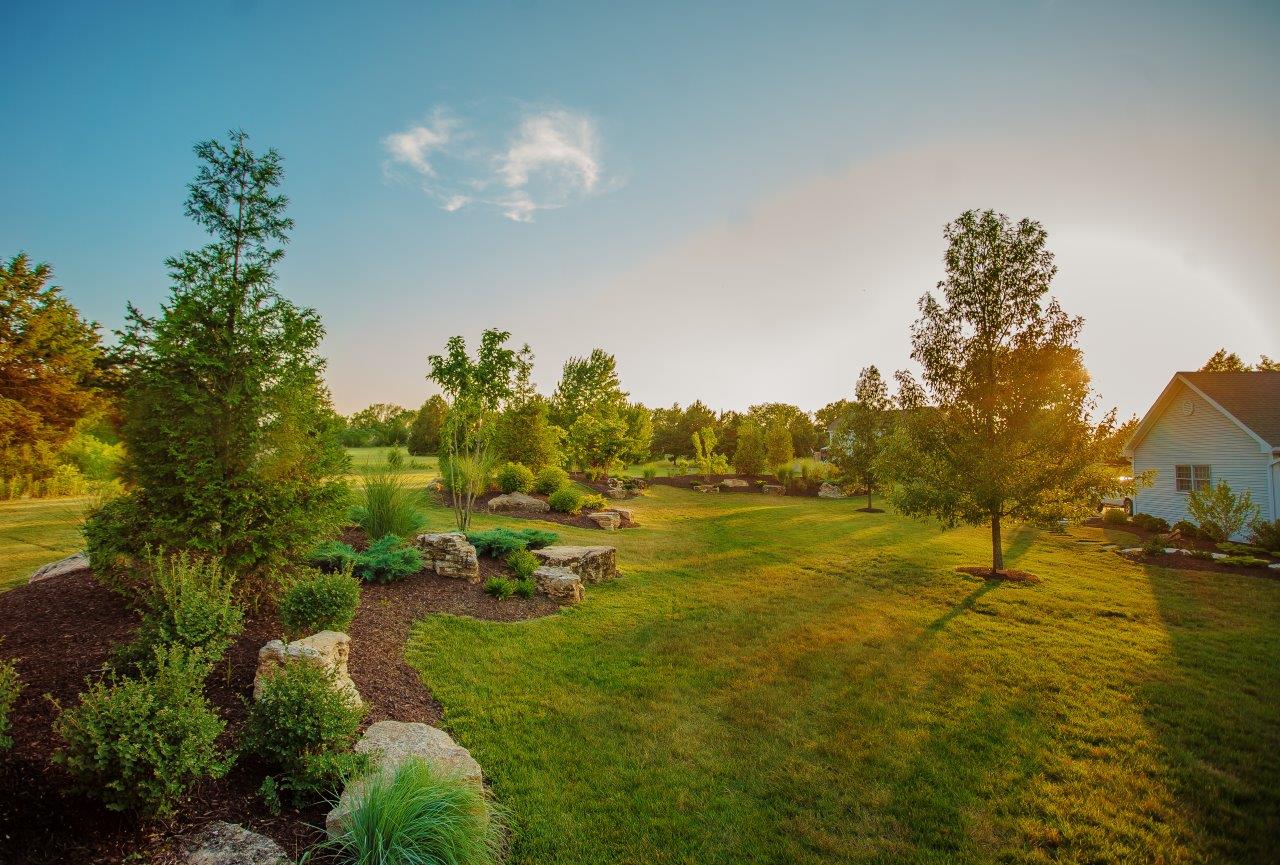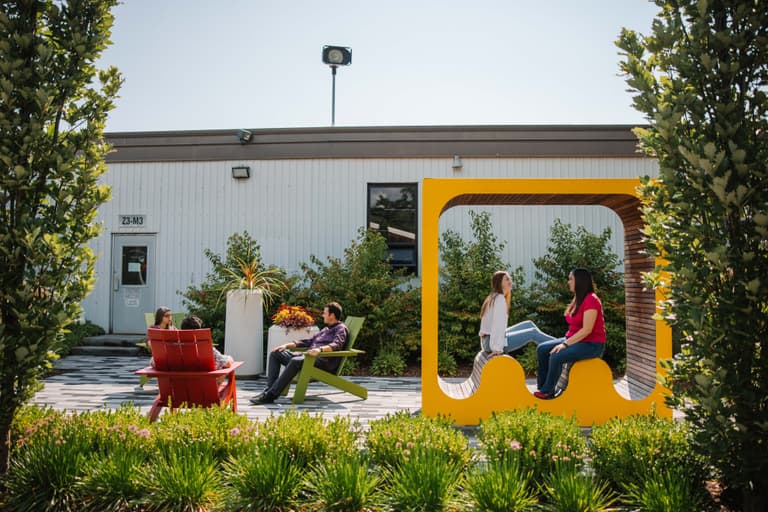Facts About Hilton Head Landscapes Uncovered
Facts About Hilton Head Landscapes Uncovered
Blog Article
Indicators on Hilton Head Landscapes You Should Know
Table of ContentsThe Facts About Hilton Head Landscapes UncoveredMore About Hilton Head LandscapesSome Known Facts About Hilton Head Landscapes.Hilton Head Landscapes - An OverviewThe Ultimate Guide To Hilton Head LandscapesThe Buzz on Hilton Head LandscapesNot known Facts About Hilton Head LandscapesHilton Head Landscapes Fundamentals Explained
Type compatibility is also a significant element of unity in designone or more noticeably various kinds are excellent for comparison and focus, however generally all other types need to have some similarities for an unified look. Structure describes how coarse or great the surface area of the plant or hardscape product really feels and/or looks.
Examples of plants with coarse structure include philodendrons, agaves, bromeliads, hollies, palms, and hydrangeas. Attributes that create fine appearance consist of little foliage; thin, strappy fallen leaves (yards) or high, thin stems; tiny, thick branches and small branches; long stems (vines); and tiny, fragile flowers.
The Single Strategy To Use For Hilton Head Landscapes
A lot of plants are medium structure, in that they can not be described as having either coarse or fine structure. Medium-textured plants act as a history to link and merge the coarse- and fine-textured plants.

To make an area really feel smaller, put the rugged appearances along the external border and the great appearances closest to the audience. The detail of the rugged appearance makes the plants appear closer and makes the space really feel smaller. The viewed appearance of plants can likewise transform with the range from the plant.
A Biased View of Hilton Head Landscapes
Bold shades enhance the comparison and make the texture show up coarser, while muted shades can flatten structure. Hardscape with a crude texturesuch as very rough rocks and bold, big timberstends to make all plant material show up more moderate textured. Designers often create a structure study (Figure 8) on paper to help decide the setup of plant materials.
Number 8. Appearance research study. Color in plant material and hardscape adds passion and selection to the landscape. Color is one of the most conspicuous element in the landscape and is normally the emphasis of most homeowners; nonetheless, it is additionally one of the most short-lived element, normally lasting just a couple of weeks a year for individual plants.
More About Hilton Head Landscapes
An easy description of the shade wheel consists of the three primary colors of red, blue, and yellow; the three secondary colors (a mix of 2 primaries) of green, orange, and violet; and six tertiary shades (a mix of one nearby primary and additional color), such as red-orange. Shade theory explains the relationship of colors to each other and exactly how they must be utilized in a composition.

Analogous (often called unified) color plans are any kind of 3 to five colors that are adjacent on the shade wheel, such as red, red-orange, orange, yellow-orange, and yellow, or blue, blue-violet, and violet (Landscaping bluffton sc). The shades are relevant to each various other due to the fact that they normally include 2 primaries mixed to create a secondary and 2 tertiary shades, which implies they share common properties
They have a tendency to have high comparison between them. One of the most usual sets are violet and yellow, red and environment-friendly, and blue and orange. Corresponding colors are usually discovered naturally in flowers; an usual set is yellow and violet. Shade is located in the blossoms, vegetation, bark, and fruit of plants.
Hilton Head Landscapes Things To Know Before You Buy
Green foliage in all its numerous shades is the leading shade by amount, however other colors capture attention quicker since of their high contrast to the color eco-friendly. Color is also found in structures, rocks, pavers, wood, and furnishings. A lot of colors in all-natural materials, such as rock and timber, are usually muted and tend to be variants of brownish, tan, and light yellow.
Color is a crucial aspect for creating passion and selection in the landscape. Colors have buildings that can impact feelings, spatial perception, light high quality, equilibrium, and focus. One residential or commercial property of color is explained family member to temperaturecolors appear to be trendy or warm and can influence feelings or feelings. Trendy shades often tend to be soothing and should be used in locations for leisure and tranquility.
Unknown Facts About Hilton Head Landscapes
The "temperature level" of shades can also affect the assumption of range. Great colors often tend to recede and are perceived as being farther away, making a room really feel bigger. Warm colors tend to development and are viewed as being more detailed, making an area really feel smaller sized. Color can also be made use of to record attention and straight views.
As an example, brilliant yellow, which has the highest intensity, also has a high contrast with all other colors (typically referred to as a "pop" of shade) and ought to be conserved. A percentage of intense shade has as much aesthetic weight as a huge quantity of a more suppressed or weaker my latest blog post shade.
Comparable (in some cases called unified) color pattern are any kind of three to five shades that are nearby on the shade wheel, such as red, red-orange, orange, yellow-orange, and yellow, or blue, blue-violet, and violet. The shades belong per other due to the fact that they usually include 2 primaries mixed to form an additional and two tertiary colors, which indicates they share usual residential properties.
Hilton Head Landscapes for Beginners
Corresponding colors are usually found normally in flowers; an usual pair is yellow and violet. Color is found in the blossoms, foliage, bark, and fruit of plants.
Eco-friendly vegetation in all its various tones is the dominant color by amount, yet various other shades capture attention much more easily due to their high comparison to the color green - Landscapers near me - https://filesharingtalk.com/members/598268-h1tnhdlndscps. Shade is also found in structures, rocks, pavers, timber, and furnishings. Many shades in all-natural products, such as rock and timber, are typically muted and often tend to be variations of brown, tan, and pale yellow
Some Known Incorrect Statements About Hilton Head Landscapes
Color is a vital component for creating passion and variety in the landscape. Colors have residential or commercial properties that can influence feelings, spatial understanding, light top quality, equilibrium, and focus. One residential or commercial property of color is described relative to temperaturecolors show up to be amazing or warm and can impact emotions or sensations. Trendy colors have a tendency to be relaxing and must be used in areas for leisure and serenity.
The "temperature" of colors can also affect the perception of distance. Trendy shades often tend to decline and are viewed as being farther away, making a room feel bigger. Warm shades often tend to advancement and are regarded as being better, making an area feel smaller. Shade can likewise be used to catch attention and direct sights.
For example, intense yellow, which has the highest possible strength, also has a high contrast with all other shades (frequently called a "pop" of color) and must be conserved. A percentage of extreme color has as much visual weight as a large amount of a much more suppressed or weaker shade.
Report this page